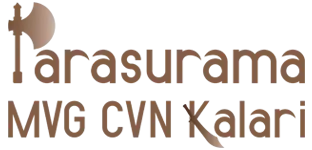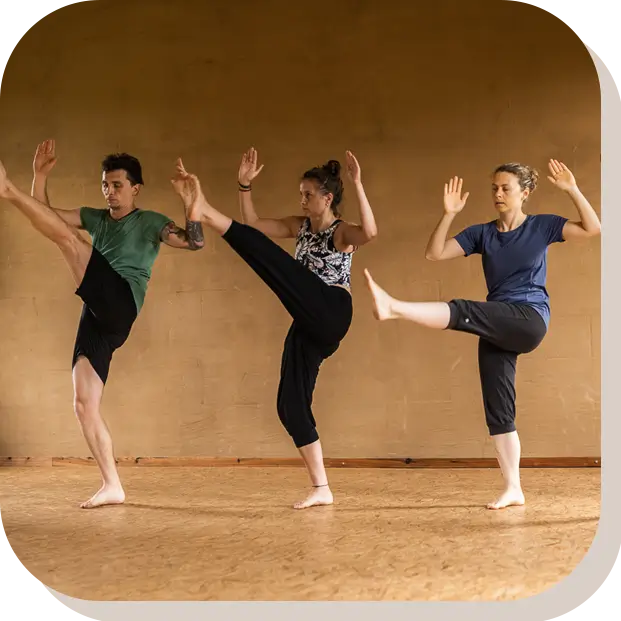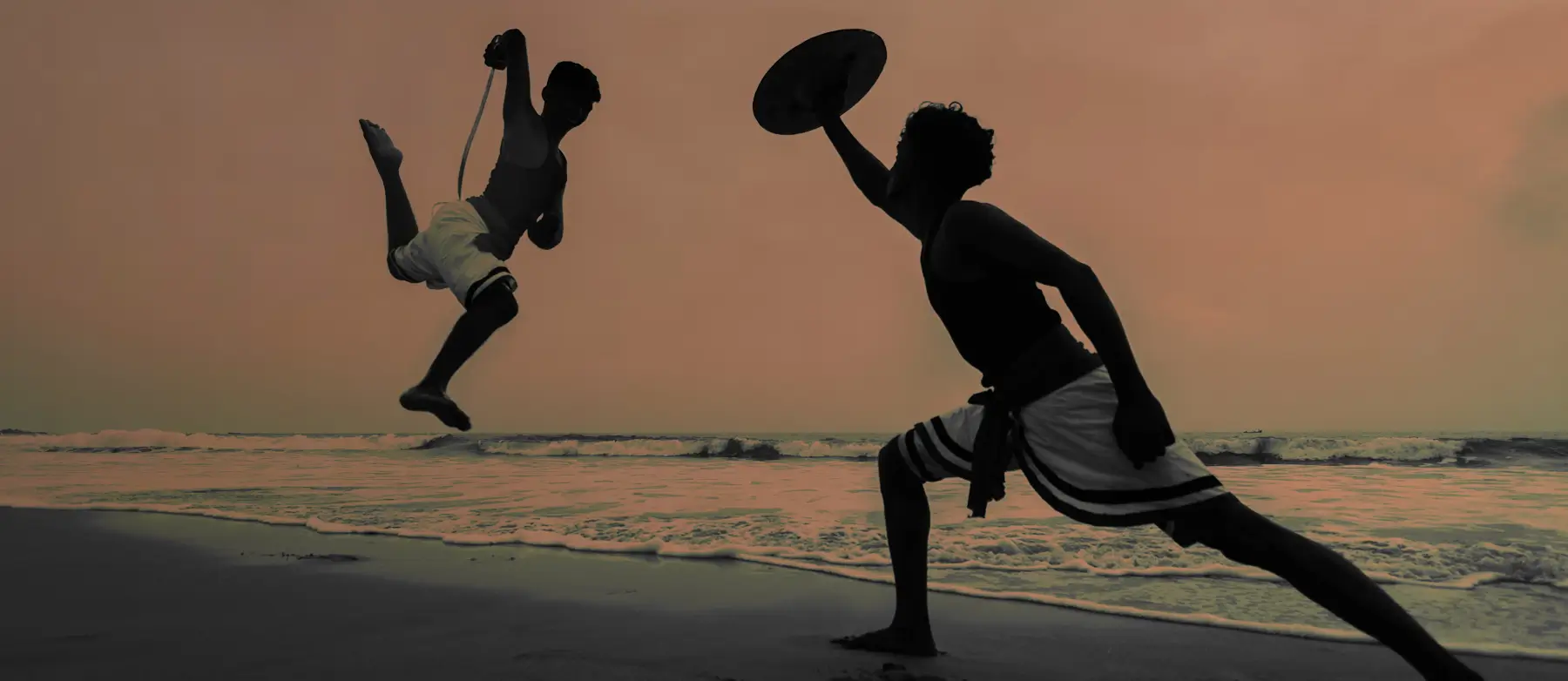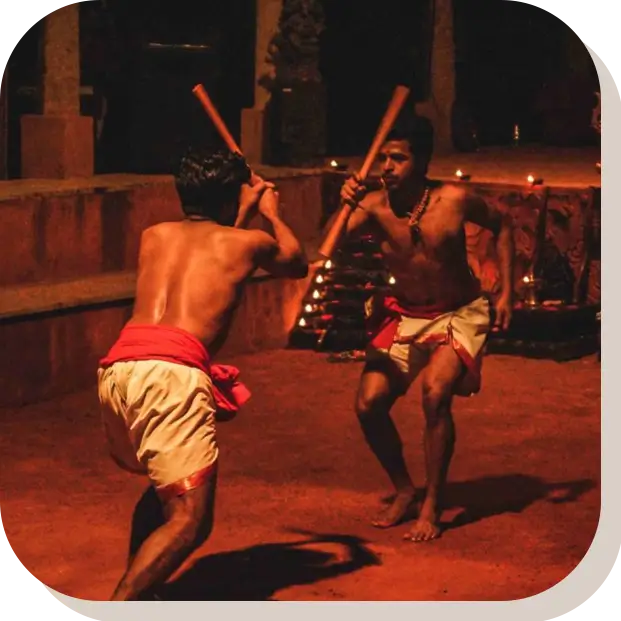Kalari Chikitsa
Only someone who practices kalaripayattu and has achieved a certain level of proficiency in his stances, movements, flexibility, has total control over his/her body and mind can perform Kalari Chikitsa (kalari treatments) effectively. As most of the techniques in Uzhichil, Thirummu (Massage with hands), Chavuttithirummu (Massage with legs) etc are to be performed while in different Amarchas (Stances) and especially in case of Chavuttithirummu (Massage with legs) only people who have complete mastery over their body by regular practice of Kaalsadhana (leg excercises) which are part of the Meythaari can perform it as it requires the practitioner to have as much control and flexibility to do the same movements that he normally performs with his hands to do it with his legs.
Kalari Chikitsa originated from the necessity of treating the warriors who gets injured while practicing and also during duels. It later evolved into an extensive treatment modality which focuses on Neuropathic issues (ailments of the nerves), Orthopedic issues (aiments of the bones) and Muscle ailments.
Traditionally wherever there are kalari's they all act as an alternative medicine system which people effectively use to treat conditions like broken bones, burises, dislocations, wear and tear of the joints, lack of flexibility, lack of strength in joints and muscles, neck and shoulder pains, frequent shoulder dislocations, tennis elbow, lack of flexibility after setting of broken bones (plaster), Back ache, back issues relating to disc prolapse, injuries caused to the ligaments of the knees or wear and tear of the joints, obesity and related issues, physical weaknesses, premature aging, Erectile Dysfunction caused due to physical and mental issues, swelling and pain in the body due to injuries caused by way of falling or accidents, issues caused due to reduced blood flow in the body, lack of movement after stroke etc to name a few.









